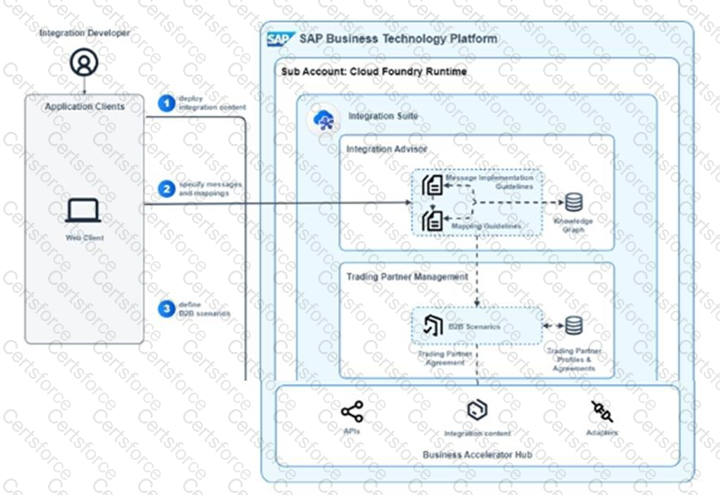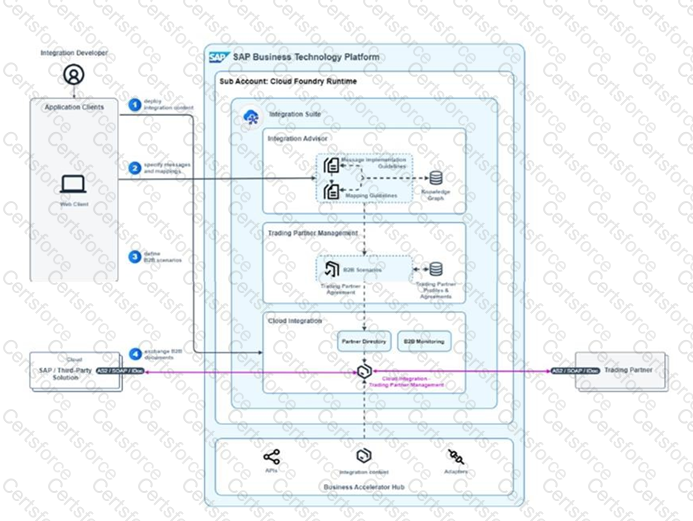According to the SAP Integration Solution Advisory Methodology, the integration architect is responsible for which of the following activities?
You are a solution architect on a brownfield project where an SAP ECC 6.0 system is being migrated to SAP S/4HANA Cloud public edition. Two mission- critical legacy applications must be migrated to the new system. There is some debate on the project team as to the appropriate programming model to use:
•Application 1 was originally written using classic ABAP. The underlying SAP tables that the application originally relied on have been removed and the data now exists in a new simplified table in SAP S/4HANA Cloud public edition (to which table extensions are not permitted). Additional data needed for the application resides in SAP Ariba. Remote interfaces exist for both to select the data.
•Application 2 was originally written using Java and relied upon tables from the SAP ECC 6.0 system as well as SAP PLM 4.0. The PLM system will be retired; however, the SAP S/4HANA Cloud public edition instance has all the data needed for the application. No remote interfaces exist to select the data.
Which of the following approaches should the customer use? Note: There are 2 correct answers to this question.
You have been hired as a solution architect and it's your first day on the job. You participate in a meeting discussing the design and development of an extension to SAP S/4HANA Cloud. In the meeting, you are told:
"We have determined that the BusinessPartner (A2X) API in SAP S/4HANA Cloud is insufficient for our needs. Fortunately, the API is extendable via key user extensibility. We are currently creating a diagram with the technical building blocks of the extension".
In which SAP Application Extension Methodology phase is the project?
Which of the following are process steps in serving up a model in SAP AI Core? Note: There are 2 correct answers to this question.
In which phase of the SAP Integration Solution Advisory Methodology is a technology mapping of customer use cases and SAP BTP integration services produced (for an example of a solution architecture blueprint, see the attached diagram)?

A fit-to-standard analysis determined that the provided SAP Fiori App for SAP S/4HANA Cloud private edition was insufficient based on existing business requirements, and that a new front-end app must be built.
As a solution architect, you are asked to propose a solution and are told the following:
•The backend logic running on SAP S/4HANA Cloud private edition is sufficient and an appropriate remote API for create, read, update, and delete (CRUD) operations exists.
•The front-end app must be able to run on a variety of devices such as mobile phones and tablets.
•Front-end app instances must scale up or down automatically based on administrator- provided scaling parameters.
Which of the following runtimes would be optimal for the new front-end app? Note: There are 2 correct answers to this question.
A company is struggling with organizing and managing their data. Their data is distributed across many databases and datastores. The data structures are also very inconsistent. They need harmonized aggregated data to be used as the basis of advanced highly summarized reports for senior executives. They prefer to use the latest SAP solutions.
Which of the following solutions would you recommend?
The finance department is creating a series of reports for their line of business (LOB) users and would like to integrate the reports in a front-end portal. They would like the LOB users to maintain the portal, as opposed to IT. As a solution architect, they come to you to recommend which SAP BTP service best fits their needs.
Which service would you recommend?
A customer wants to verify the feasibility of the attached "proof of concept" design. They would prefer a zero (or minimal) upfront investment but want to seamlessly transition to a different pricing model while preserving their SAP BTP investments if the design works.
As a solution architect, which pricing plan would you recommend to the customer?

A manufacturer wants to discuss the design of a solution that tracks and manages stock availability and movement of goods within a warehouse. They want to ensure that movements are aggregated for reporting purposes and that these reports can be used to optimize stock movements. They also want to use the newest solutions to build these reports.
Which of the following solutions can be used together to fulfill the requirements? Note: There are 3 correct answers to this question.